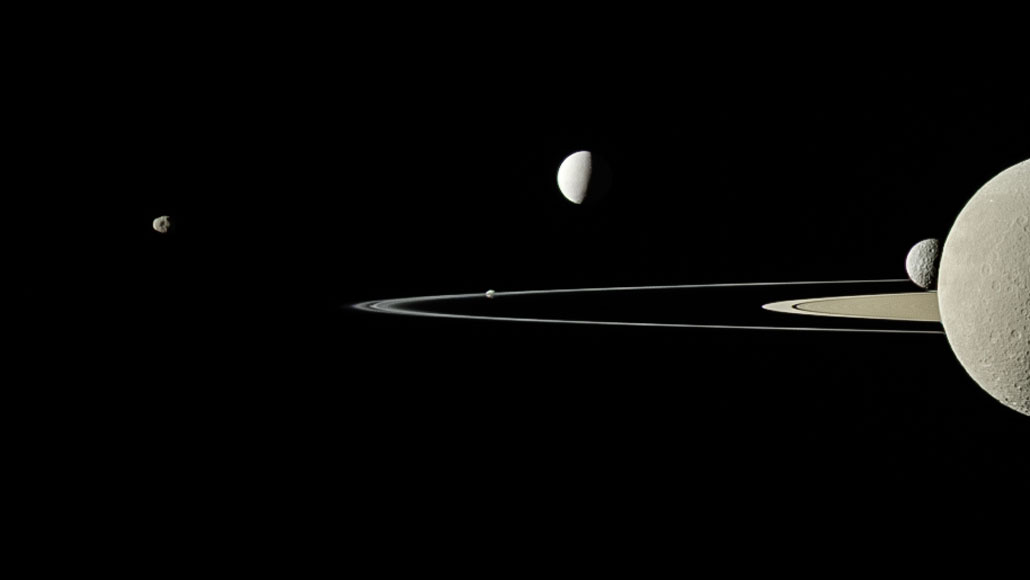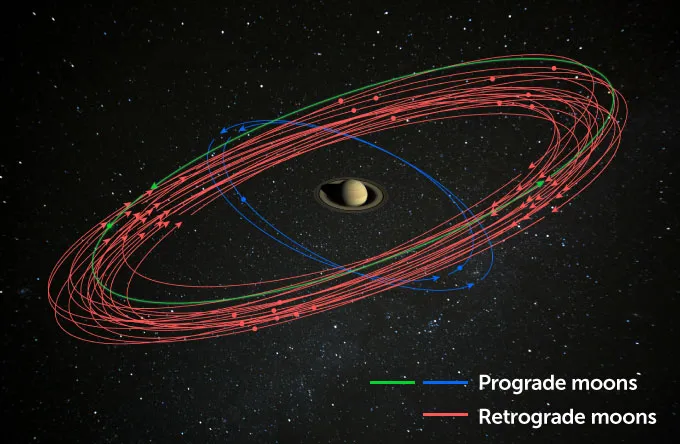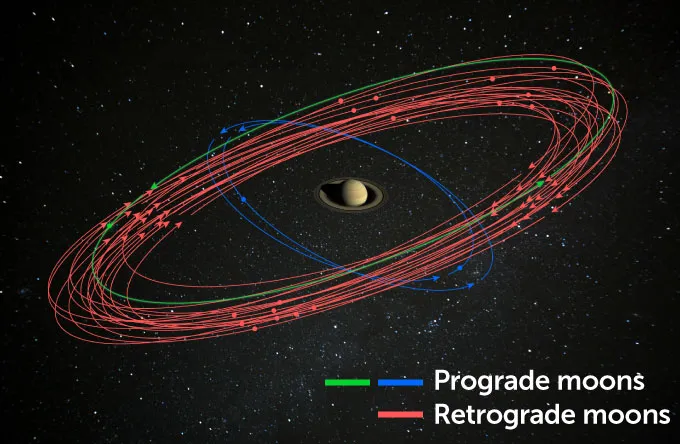With 20 new moons, Saturn now has the most of any solar system planet
The discovery brings the planet’s total to 82. The previous record-holder, Jupiter, has 79

Saturn now has the most known moons of any planet in the solar system: 82. In 2011, the Cassini spacecraft captured this image of Saturn with five of its moons visible.
Space Science Institute, JPL-Caltech/NASA









